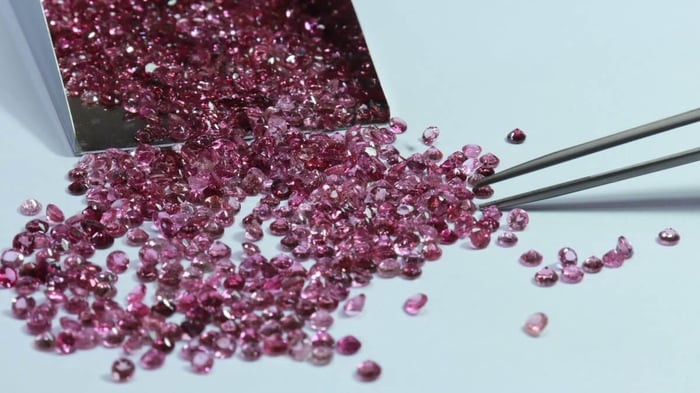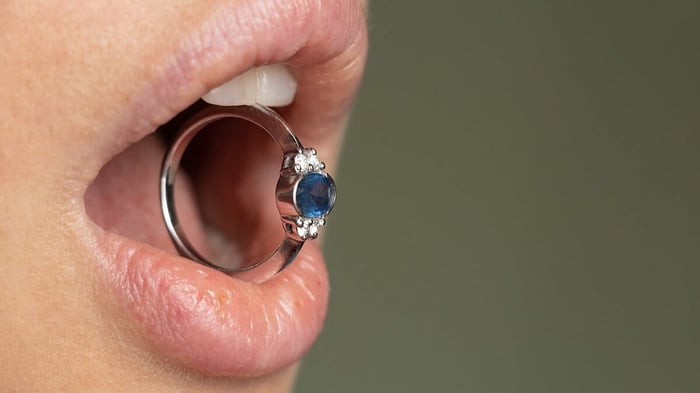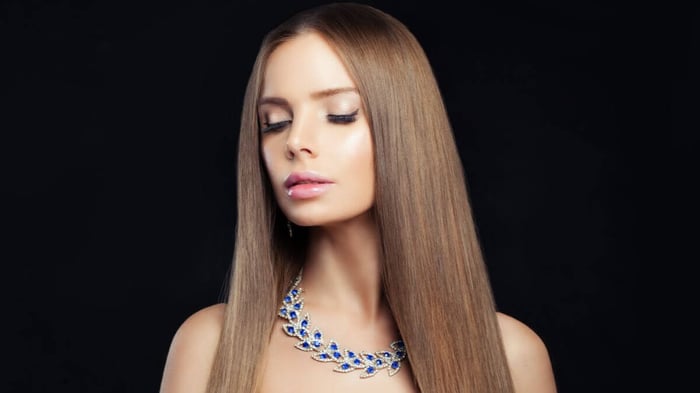What You Need To Know About Blue Diamonds
Have you ever seen a natural blue diamond? Probably not; most people haven't, not even professional jewellers. Like other natural fancy coloured diamonds, blue diamonds are rare, and if available, they come with a high tag price. Yes, they are sometimes available in the market, but they are so rare to the extent that most of today's jewellers have not seen or touched one.
The first blue diamond recorded was found in India in the seventeenth century. This diamond weighs 45.52 carats. It is now exhibited in the USA's National Museum of Natural History. Since the discovery of the Hope diamond, blue diamonds have been found in the Cullinan mine in South Africa and the Golconda region of India. A few blue diamonds have been mined at the Argyle Mine in Australia.
A number of gemologists and gem dealers estimate that the world's supply of blue diamonds will run out within the next 30 years.
The Various Colours Of Blue Diamond
The blue diamond varies in hue. The most highly sought after hue is deep aquamarine. Blue diamonds are preferred with more rather than less colour saturation. Some blue diamonds are seen as being too pale; they are called "little aquas". These very pale blue diamonds do not look impressive when small, but they are beautiful in large gemstones.
There is also the so-called green tinge. But unlike the deep aquamarine, the green tinge coloured diamond is not particularly popular. Buyers tend to prefer the purer blue shades, objectively they tend to be attractive but modern taste runs against them, so designers do not often choose them for their designs.
Aside from deep aquamarine and green tinge, the Gemological Institute of America (GIA) has defined eight different colour saturation grades for blue diamonds. These colour levels include very light, light, fancy light, fancy, intense, deep, dark, and vivid. Certain other colour combinations exist, such as grey-blue and green-blue.
The blue colouration in diamonds comes from tiny amounts of boron. The depth of the colouration depends on the amount of boron in the diamond. More boron equals a darker hue.
Blue Sapphire 0.50ct & 0.30ct G/SI Diamond Necklace in 18k White Gold

€899,95
The combination of sparkling blue sapphire and white diamonds is an eye-catching and unique fashion statement. This necklace is perfectly balanced, and the diamonds will never overpower the sapphire. The pendant features 0.50CT of bright blue sapphires nestled within a collection… read more
The Cuts And Shapes Of Blue Diamonds
Like the colourless diamonds and all other coloured gemstones, blue diamonds are produced in different cuts and shapes. The best-known shape is the round brilliant, the most popular diamond shape in modern times, accounting for over 70% of all diamonds used in jewellery. There is also the heart or romantic shape, which is a modification of the round brilliant cut. This kind of cut and shape will surely suit the needs of romantics.
In addition, the blue diamond sometimes comes in a pear shape. This shape is similar to the heart shape in that it is also a modification of the round brilliant. All these cuts have a large number of facets. The faceting of the diamond gives the gemstone its sparkle. As light enters the diamond and is reflected out to the viewers' eyes from the surfaces of the stone, the diamond catches the light and sparkles.
Over the past century, diamond cutters devised new shapes using mathematics. New cutting and polishing tools and techniques were developed, more cuts were created that gave jewellery lovers more brilliant diamonds with new and exciting shapes that could be used in new ways.
Vintage 2.60ct Blue Sapphire & 0.90ct Diamond Drop Necklace White Gold
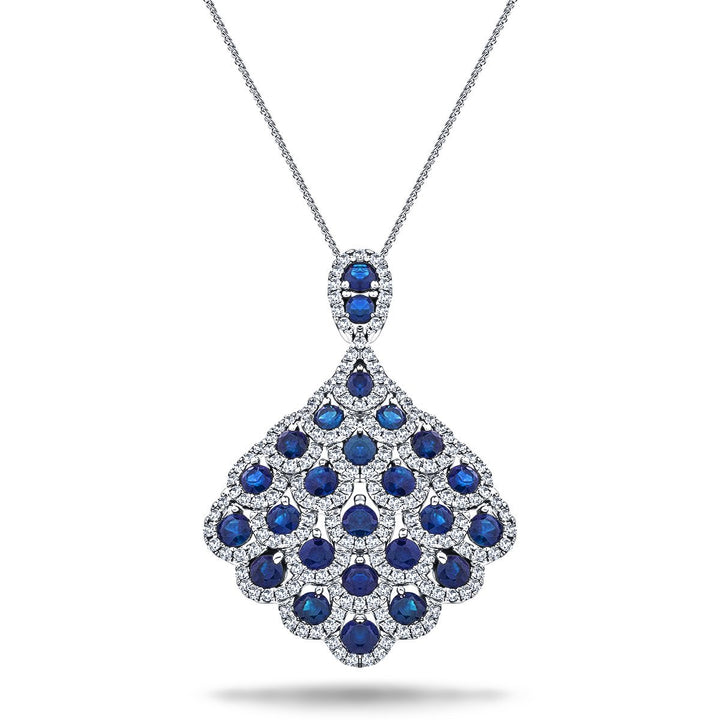
€2.798,95
Vintage jewellery is the perfect way to add that special touch to your outfit. This stunning necklace has been handcrafted in solid 18ct White Gold and set with 2.60ct of Blue Sapphire. The beautiful colour of the Blue Sapphire is… read more
Among these newer cuts, the princess cut is the most well-known. It attracts thousands of customers worldwide for its unique combination of square shape with rounded corners with the brilliance of a brilliant cut. Aside from princess, there is also the so-called "marquise or navette cut", which has long been deemed better in fancy coloured diamonds than in white or clear diamonds. The marquise cut adapts the round brilliant shape like the other brilliant cut shapes.
Cut, Clarity And Blue Diamond Quality
Blue diamonds vary in carat weight and degree clarity. However, the carat weight does not denote the quality of the blue diamond. It just defines the diamond by its weight. But clarity, on the other hand, is crucial. Like the cut and colour, the clarity directly impacts the quality and price of blue diamonds. The clearer the diamond is, the better it sparkles and the more it costs. Of course, the larger the stone, the higher its price will be.
Blue Diamonds, Value And Cost
Blue diamonds sold today are much more expensive than near-colourless white or clear diamonds. However, artificial treatments can be applied to clear diamonds to make them look blue. Of course, these diamonds are nowhere near as valuable as genuine mined blue stones. Such diamonds are not bought as investments or to be resold; they are purely for jewellery use.
0.75ct Blue Sapphire 0.40ct Diamond Five Stone Ring 18k Yellow Gold
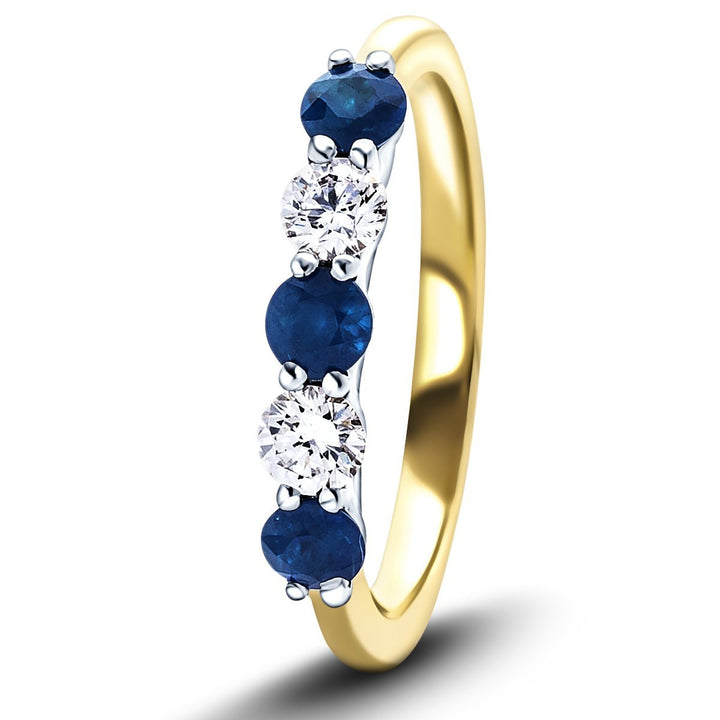
€1.560,95
Luxurious and stylish, these high-quality rings are made with tremendous attention to detail. Three beautiful round brilliant cut blue sapphires and two diamonds are set in alternating positions to create an eye-catching pattern. The eye-catching pattern is a classic style… read more
If you see blue diamond jewellery at a price close to equivalent quality white diamond jewellery, it is almost certain to be a treated diamond. Synthetic diamonds with blue colour are sometimes made, but like all synthetic diamonds, their value and thus cost is lower than a naturally mined stone. Some buyers choose synthetic diamonds for ethical or cost reasons.
Take Care Buying Blue Diamond Jewellery
In the UK, there is no legislation forcing jewellers to inform buyers that a diamond has been treated to alter its colour. Whenever you buy a coloured diamond, just as with any other diamond larger than about 0.50 carats, always ask for a diamond certificate from a reputable diamond grading laboratory such as the GIA.
It is not economic to obtain a grading certificate for a small diamond; this will tell you all about the stone, including any colour treatments. Suppose the diamond is very small and does not have a diamond grading certificate, ask the jeweller. In that case, you can expect a reputable jeweller to tell you about treatments and other quality issues.
Oval 1.50ct Blue Sapphire 1.00ct Diamond Cluster Ring 18k Yellow Gold
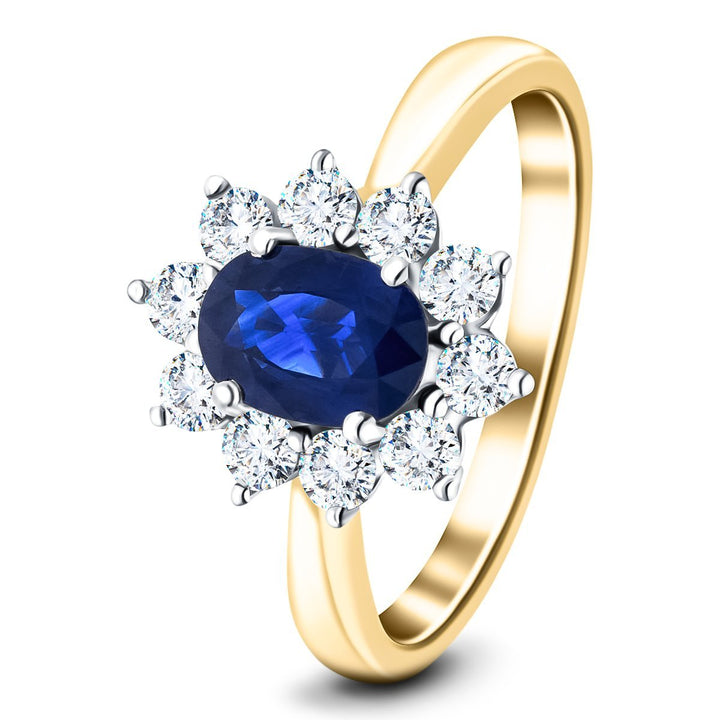
€3.122,95
This gorgeous ring is a stunning piece of handcrafted jewellery. Featuring a stunning cluster of diamonds and an oval blue sapphire, the ring is a beautifully crafted piece of 18k yellow gold. The ring is made to order and features… read more
At All Diamond, we do not, at this time, offer blue diamonds because all of our diamonds are natural and untreated. The cost of a genuine blue diamond is much higher than the jewellery we sell. However, if you enjoy blue jewellery at a reasonable price, we offer a wide range of diamond jewellery that incorporates blue sapphires in the design. The use of sapphires and diamonds gives a beautiful and striking colour combination that many buyers find irresistible!


